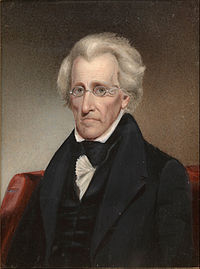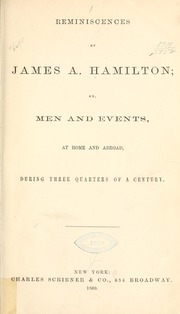Let& #39;s continue learning about the Hamilton children! This week: James A. Hamilton.
James Alexander Hamilton was born in New York City to Elizabeth Schuyler and Alexander Hamilton (both below) on April 14, 1788. The couple’s fourth child was named after his paternal grandfather.
James Alexander Hamilton was born in New York City to Elizabeth Schuyler and Alexander Hamilton (both below) on April 14, 1788. The couple’s fourth child was named after his paternal grandfather.
He was baptized at Trinity Church alongside two of his older siblings. His baptismal sponsors were his aunt Peggy Schuyler and her husband, Stephen van Rensselaer III, and the Baron von Steuben (below).
In his autobiography, "Reminiscences of James A. Hamilton," he recalls his mother "seated [...] at the head of the table with a napkin in her lap, cutting slices of bread and spreading them with butter for the younger boys, who, standing at her side [...]
read in turn a chapter in the Bible or a portion of Goldsmith’s Rome. When the lessons were finished, the father and elder children were called to breakfast, after which the boys were packed off to school.”
James often visited his grandparents at Albany, such as in the summer of 1791, with his mother and siblings, and in 1793, after his parents contracted Yellow Fever in Philadelphia. He was five years old at the time.
By 1804, James was studying at Columbia College. His father prepared for him a "Thesis on Discretion” and gave it to James just days before his duel with Aaron Burr. You can read what Hamilton wrote his son here: https://founders.archives.gov/documents/Hamilton/01-26-02-0001-0242-0002">https://founders.archives.gov/documents...
James, only sixteen at the time, was one of the sons who witnessed his father’s funeral procession and sat upon the stage crying with his other brothers. James, like his older brothers, graduated from their father’s alma mater, Columbia College.
After his graduation, he began studying under Judge Pendleton, likely the same man who served as a second in his father’s duel, as he was a judge in NY. James completed his studies with Pendleton and was admitted to the bar in 1809.
James practiced law in Waterford, NY for about a year while settling land issues for his mother in nearby Saratoga, then moved south to Hudson, NY and began practicing there. (Below is the Schuyler House in Saratoga; not owned by Eliza Schuyler Hamilton.)
On October 17, 1810, he married Mary Morris. He recalled that because both of their families had so little money, the newlyweds lived in a poverty "so extreme that during our first year we boarded at four dollars per week each.”
They had their first two children, Elizabeth (Eliza) and Frances (Fanny) before James began his service as Deputy Quartermaster to Colonel Varian’s Infantry Regiment in 1814, during the War of 1812.
He was then appointed Brigadier Major and Inspector of General Height’s Brigade, eventually achieving the rank of Lieutenant Colonel. Following the war’s end, he and Eliza welcomed three more children into the world: Alexander Jr., Mary, and Angelica.
In 1819, someone forged a note from James Alexander to Aaron Burr, challenging Burr (below) to a duel. James, upset that anyone even considered it to be true, quickly proved the note was a forgery.
In 1829, he was appointed to the position of Acting Secretary of State under Andrew Jackson’s (below) administration. When he left that position, he was appointed to that of US Attorney for the Southern District of New York.
In 1835, James built an estate he called "Nevis” in honor of his father’s birthplace. It sat on sixty acres in Irvington, NY. His grown children and grandchildren often visited. (Photo credit: https://en.wikipedia.org/wiki/Nevis_Laboratories#/media/File:South_facade_of_the_Nevis_Mansion.jpg)">https://en.wikipedia.org/wiki/Nevi...
James Alexander opposed the Second Bank of the United States (below), which was the successor to his father’s bank. After studying banking systems in other countries, he deemed the current back unconstitutional and “dangerous to liberty.”
He acknowledged that it did "render important services to the government and Country,” but believed those qualities of the bank could be achieved without those he deemed dangerous and unconstitutional.
He presented his own version that would have "no stockholders, make no loans, have no debtors…” He said his bank would strengthen the states and "afford less aid to a dishonest president, and would never be opposed to an honest one.”
By 1836, the bank became a private institution. That same year, on October 10th, James Alexander set sail for Europe. He visited England, Scotland, France, and Italy during his time abroad, returning home in 1837.
Throughout his life, as evidenced in numerous letters in the Library of Congress’s Hamilton Family Collection, he handled legal matters related to the properties his mother (below) had inherited upon her father’s death in 1804.
In a letter dated October 24, 1836, his mother called him "the favorite son of my beloved departed husband.” James Alexander was by his mother’s (below) side when she died in Washington D.C. on November 9, 1854.
James published "Reminiscences of James A. Hamilton: Or, Men and Events, at Home and Abroad During Three Quarters of a Century” (cover below) in the late 1860s. His memoir provides great detail about his life, especially through the letters he includes.
James outlived his wife, who died in 1869 at the age of 79, his daughter Eliza, who died at the age of 52, his daughter Angelica, who died at the age of 49, and his daughter Mary (below), who died at the age of 59.
James Alexander Hamilton died on September 24, 1878, at the age of 90. He was survived by his daughter, Fanny, and his son, Alexander Jr. He’s buried in Sleepy Hollow Cemetery in Sleepy Hollow, NY.
Questions about James Alexander Hamilton? Leave them below!
SOURCES
https://registers.trinitywallstreet.org/files/history/registers/display_detail.php?id=2677&sacr=baptism">https://registers.trinitywallstreet.org/files/his...
#v=onepage&q&f=false">https://books.google.com/books?id=0uQEAAAAYAAJ&ppis=_e&lpg=PA65&dq=It%20was%20my%20good%20fortune%20to%20have%20almost%20the%20entire%20care%20and%20management%20of%20her%20affairs.%20The%20elder%20son%2C%20Alexander%2C%20was%20away%20from%20home%20attending%20to%20his%20commercial%20affairs.%20I%20remained%20at%20the%20Grange%20with%20her%20as%20long%20as%20she%20remained%20there%2C%20attending%20to%20the%20cultivation%20and%20household%2C%20and%20after%20her%20father%E2%80%99s%20death%20I%20became%20useful%20in%20collecting%20her%20rents%20and%20selling%20such%20parts%20of%20her%20property%20as%20her%20needs%20required&pg=PP1 #v=onepage&q&f=false
https://books.google.com/books... href=" https://founders.archives.gov/documents/Hamilton/01-26-02-0001-0242-0001">https://founders.archives.gov/documents...
https://founders.archives.gov/documents/Hamilton/01-26-02-0001-0242-0002
https://founders.archives.gov/documents... href=" https://www.loc.gov/resource/maj.01074_0261_0272/?sp=1&st=text
https://www.loc.gov/resource/... href=" https://www.nevis.columbia.edu/brief-introduction.html">https://www.nevis.columbia.edu/brief-int...
HAMILTON by Ron Chernow
NYHS
SOURCES
https://registers.trinitywallstreet.org/files/history/registers/display_detail.php?id=2677&sacr=baptism">https://registers.trinitywallstreet.org/files/his...
#v=onepage&q&f=false">https://books.google.com/books?id=0uQEAAAAYAAJ&ppis=_e&lpg=PA65&dq=It%20was%20my%20good%20fortune%20to%20have%20almost%20the%20entire%20care%20and%20management%20of%20her%20affairs.%20The%20elder%20son%2C%20Alexander%2C%20was%20away%20from%20home%20attending%20to%20his%20commercial%20affairs.%20I%20remained%20at%20the%20Grange%20with%20her%20as%20long%20as%20she%20remained%20there%2C%20attending%20to%20the%20cultivation%20and%20household%2C%20and%20after%20her%20father%E2%80%99s%20death%20I%20became%20useful%20in%20collecting%20her%20rents%20and%20selling%20such%20parts%20of%20her%20property%20as%20her%20needs%20required&pg=PP1 #v=onepage&q&f=false
https://founders.archives.gov/documents/Hamilton/01-26-02-0001-0242-0002
HAMILTON by Ron Chernow
NYHS

 Read on Twitter
Read on Twitter















